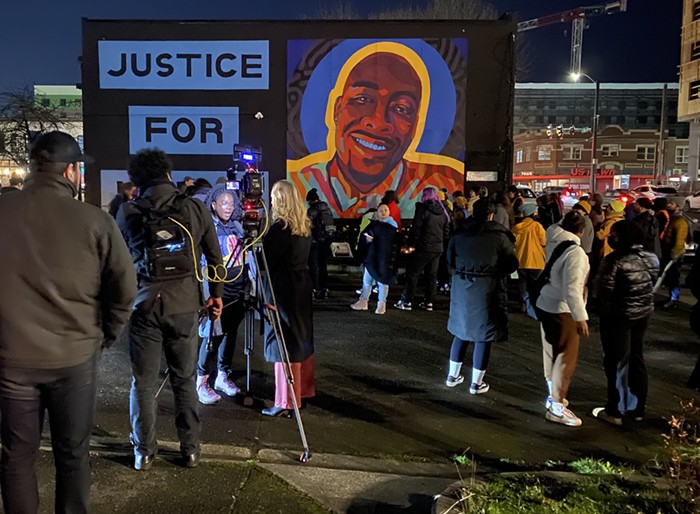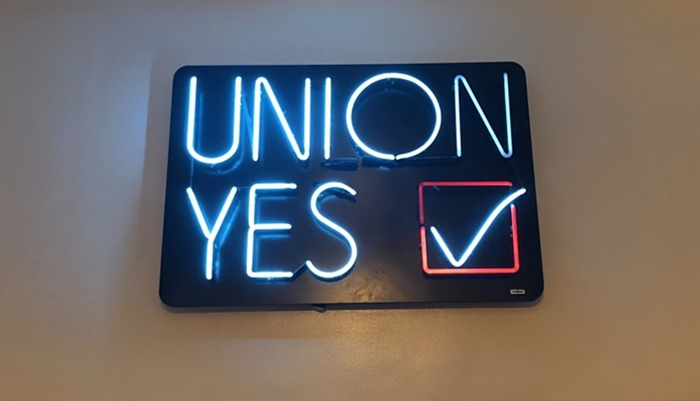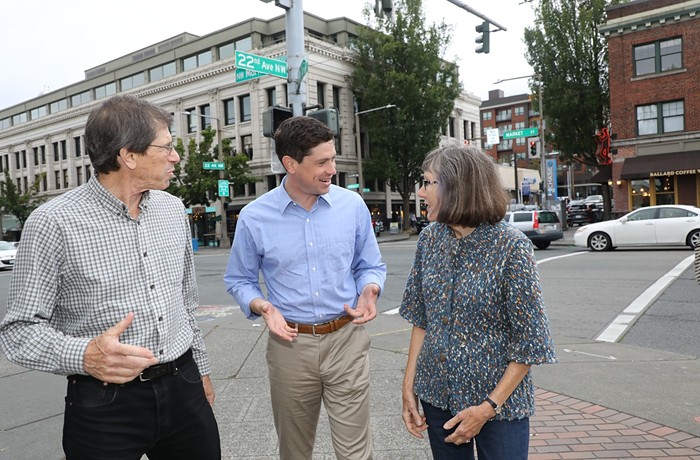
On the morning of Friday, Jan. 14, the NAACP youth council gathered Seattle Public School students outside the John Stanford Center for Educational Excellence to air their grievances about the district’s response to rising COVID-19 cases in classrooms.
According to SPS’s COVID-19 Dashboard, last week the district set a record high of 803 new cases. That’s almost six times as many cases as the district’s previous record, which it set during the week of Dec. 11 to Dec. 17. The cases reported last week alone account for 30% of all cases in the past 16 months.
The website added a disclaimer that the data from the first week of January included results from the district's effort to test students after winter break, a process that didn’t go smoothly. Delano Cordova, a senior at Franklin High School, said he waited in line for six hours to get tested.
“It’s always at the back of my mind. I could catch it at any time,” he added.
The surge in the highly transmissible Omicron variant threw a wrench in in-person instruction for many schools around the Seattle area. Teachers and students both said they want to return to in-person learning – they just want to do it safely – and they both say the district needs a better, more transparent COVID-19 response.
The student protesters have three demands: They want the district to provide N95 masks, mandatory on-campus testing every week, and on-campus vaccine clinics, said Natalya McConnell, a sophomore at Franklin High School. Last week, Governor Jay Inslee announced a plan to distribute 1 million at-home tests and millions of masks to K-12 schools.
Meanwhile, teachers want thoughtful COVID-19 metrics that strike a safe balance between health and the education of students, especially Special Education (SPED) students who were not considered in the initial metrics.
“We need a plan that doesn’t call us heroes,” said Anthony D’Amico, a teacher at Lincoln High School. “We need some action. The time for discussions was a month ago.”
Right now, the solution from the district is to wait and see if enough teachers will be healthy enough to teach. At times, school leaders make the decision to cancel class so last-minute that this week students showed up to Franklin High School only to be turned away, according to students at the protest.


On Friday, four SPS schools closed and eight shifted to online learning. Lincoln High School, which reported seven cases in the first week of January, announced a Thursday closure due to an influx in staff sick leave requests. Franklin High School, which reported 54 cases, went remote earlier this week and will stay online until Tuesday, following the Martin Luther King Jr. Day holiday. Cleveland High School, also expected to return Tuesday, reported 23 cases.
It’s up to individual schools to decide whether or not to keep staff and students in a petri dish. Earlier this month, Superintendent of Public Instruction Chris Reykdal announced that the state will not mandate remote learning like it did in 2020. Reykdal won’t make the call, and neither will the governor.
In a letter to SPS staff on Monday, the district laid out its own set of metrics for returning to remote learning. The standards are also on the district's website.
While these new metrics give specific rules on a class-by-class basis, SPS failed to include SPED students in its publicly available standards.
According to an email from the SPS, on Wednesday, the most recent day of in-person instruction, two out of seven SPED teachers at Cleveland High School called out, and all SPED teachers called out at Lincoln High School. Tina Riss Christiansen, a communication consultant from the district, said that schools rely on substitutes, other teachers and staff to cover SPED when these teachers are sick. The district did not say if it would include SPED staffing in its school closure guidelines.
But that’s not the only poor planning that concerns the SPS community. On Thursday, SPS sent teachers a new protocol should they test positive for COVID-19. Teachers can end isolation if they have gone 24 hours without a fever, if their symptoms have improved, and if five days have passed since their last test. The CDC recently changed isolation protocols to just five days as well, much to the delight of airlines.
D’Amico, the Lincoln High teacher, tested positive for COVID-19 on Thursday. He said he “feels bad” for getting sick in the first place because he wants to be in his classroom, but he does not think SPS guidelines are stringent enough.
D’Amico said “healthy teachers” plan to return to school on Tuesday as scheduled. The student protesters, however, will not come back until their demands are met, said McConnell.
“We are stronger together,” McConnell said. “The district has to act. Anything less is unacceptable.”
The district has not immediately ordered thousands of masks, or organized on-campus clinics, but, according to an email from Christiansen, SPS is listening. The district sent stakeholder engagement director Kirk Mead to talk to students. At the protest, he meandered through the crowd and asked students about their concerns, which he said he will bring to administrators.
“They missed school for this – which we all know is so important – the least we can do is come hear them out first-hand,” Mead said.



















